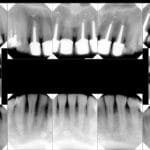The hepatorenal recess, also known as Morison’s pouch or the subhepatic recess, is a potential space located between the liver and the right kidney. While typically empty, this seemingly insignificant space plays a crucial role in diagnosing various intra-abdominal conditions. When fluid accumulates within the hepatorenal recess, it becomes a readily visible sign on imaging studies, often indicating an underlying health issue. This comprehensive guide will explore the anatomy, clinical significance, associated conditions, and diagnostic techniques related to the hepatorenal recess.
Anatomy and Function: A Potential Space
The hepatorenal recess resides within the peritoneal cavity, nestled between the right lobe of the liver and the right kidney and suprarenal gland. In a healthy individual, it’s essentially a “potential space,” meaning it exists anatomically but remains collapsed and contains no significant fluid. Its primary function is to allow for subtle movements between the liver and kidney during respiration and changes in posture.
Clinical Significance: A Diagnostic Window
The hepatorenal recess gains clinical importance when it deviates from its normal, collapsed state and begins to accumulate fluid. This fluid accumulation is readily detectable through imaging techniques like ultrasound and CT scans, making Morison’s pouch a valuable diagnostic window into the abdominal cavity. The type of fluid within the recess – such as ascites, blood (hemoperitoneum), pus, or other fluids – provides crucial clues about the underlying condition. For instance, the presence of blood might suggest internal bleeding, perhaps from trauma or a ruptured organ, while a significant amount of ascitic fluid could indicate liver disease or heart failure.
Associated Conditions: Uncovering the Root Cause
Fluid in Morison’s pouch is not a disease in itself, but rather a symptom of an underlying problem. Several conditions can lead to fluid accumulation in this space:
Ascites
Ascites, the buildup of fluid within the peritoneal cavity, is often linked to liver cirrhosis, portal hypertension, and heart failure. The hepatorenal recess, being a dependent part of the abdomen, frequently becomes a collection point for ascitic fluid.
Hemoperitoneum
Hemoperitoneum refers to the presence of blood within the peritoneal cavity. This can occur due to various reasons, including trauma (such as a ruptured spleen), a ruptured ectopic pregnancy, complications from surgery, or bleeding disorders. The blood often pools in Morison’s pouch, making it a key area for detection during imaging. Need emergency intervention for a tension pneumothorax? Learn about finger thoracostomy.
Hepatorenal Syndrome (HRS)
HRS is a serious complication of advanced liver disease, specifically cirrhosis. It involves the development of kidney failure in individuals with severe liver dysfunction, even without pre-existing kidney disease. HRS is closely linked to portal hypertension, and the presence of fluid in Morison’s pouch, while not diagnostic, can be a part of the overall clinical picture. The pathophysiology of HRS is complex and involves splanchnic vasodilation and reduced renal blood flow, often triggered by infections or large-volume paracentesis. This condition requires prompt medical management.
Infections
Infections within the abdomen, such as peritonitis (inflammation of the peritoneum), can also cause fluid to accumulate in Morison’s pouch. This fluid may contain pus, and the patient may exhibit signs of infection like fever, chills, and abdominal pain.
Other Causes
While less common, other conditions like mesenteric or retroperitoneal lesions (tumors or cysts), lymphatic malformations, or complications from peritoneal dialysis can also contribute to fluid accumulation in the hepatorenal recess. For example, some patients on peritoneal dialysis may experience fluid leakage into the recess, although this is usually not a cause for concern. Interested in advanced dental procedures? See our article on FMX dental.
| Condition | Likely Fluid Type | Other Potential Symptoms |
|---|---|---|
| Ascites | Ascitic fluid | Swelling in the abdomen, shortness of breath |
| Hemoperitoneum | Blood | Abdominal pain, signs of shock (rapid pulse, low blood pressure) |
| Hepatorenal Syndrome | Ascitic fluid | Decreased urine output, jaundice |
| Infection | Pus, infected fluid | Fever, chills, abdominal pain |
It’s important to note that the amount of fluid in the hepatorenal recess doesn’t always directly correlate with the severity of the underlying condition. The presence of even a small amount of fluid can be a significant finding and warrants further investigation.
Diagnosis: The Role of Imaging
Medical imaging is essential for visualizing the hepatorenal recess and detecting fluid accumulation. Ultrasound and CT scans are the primary imaging modalities used. Ultrasound employs sound waves to create images, while CT scans utilize X-rays and computer processing to generate more detailed cross-sectional views. These techniques allow healthcare professionals to not only identify the presence of fluid but also assess its characteristics and volume, helping guide diagnosis and treatment decisions.
James Rutherford Morison: The Man Behind the Name
The eponym “Morison’s pouch” honors British surgeon James Rutherford Morison (1853-1939). While not extensively detailed in available resources, further research into his surgical contributions could provide valuable historical context.
Ongoing Research and Future Directions
Research continues to explore the intricacies of the hepatorenal recess and its role in various disease processes. Scientists are investigating new ways to utilize information gleaned from this small space to improve diagnostic accuracy and treatment effectiveness. One area of active study is the relationship between the specific imaging characteristics of fluid in the recess (e.g., density, consistency) and the underlying cause. Another focus is the development of more targeted interventions for conditions like HRS, based on a better understanding of its pathophysiology.
Conclusion: A Small Space with Big Implications
The hepatorenal recess, although a small and often overlooked anatomical feature, can provide crucial diagnostic insights. Its tendency to collect fluid makes it a valuable indicator of various intra-abdominal conditions. Understanding the anatomy, clinical significance, and associated conditions of Morison’s pouch allows healthcare professionals to make informed decisions regarding diagnosis, treatment, and ongoing patient care. While not a household term, the hepatorenal recess undoubtedly plays a vital role in modern medical practice.
















